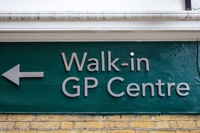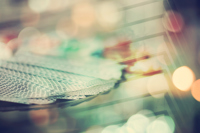
New research by Frontier Economics identifies that demand for GP services is likely to rise by about 33% by 2034, compared to a baseline in 2015 when GP statistics were first made publicly available.
Planned increases to GP numbers alone will not be sufficient to close this gap, highlighting the critical importance of supplementing GP numbers with a range of other trained staff. A visit to the family doctor will look different for many. One test of the new long term plan will be its ability to meet these challenges.
Future demand for GP services
Demand will be driven by a growing, aging and sickening population, with additional demands coming from some areas of care being moved onto GPs from other parts of the health system, and the need to close the “deprivation gap” (i.e., people living in more deprived areas receiving equal GP access to those living in less deprived areas).

Supply-demand gap once new GP recruits are taken into account
Despite the planned recruitment of more qualified GPs (“QGP”) and GP trainees, the increases in GP numbers alone will not be sufficient to restore GP access to 2015 levels, even when you take into account productivity gains. This is in part due to a trend for GPs to move from full- to part-time working practices.

Closing the supply-demand gap
Closing the supply-demand gap is therefore critically dependent on supplementing fully trained GPs with new trainee GPs and a range of other trained staff, such as Nurse Practitioners, Physician Associates and other associated roles alongside an increased role for pharmacies through Pharmacy First.

Matthew Bell, a Director in our Public Policy practice, comments:
“Access to GP services has been under considerable strain for many years. If the NHS meets all its stated plans it may be able to just about meet demand. That highlights one risk: can all the plans be delivered on time?
"Even if the plans are delivered, the result will be a primary care service that looks different to the service that existed for previous generations. That highlights a second risk: that the public does not recognise the ‘new look’ primary care service. A test for the promised ten year plan is how it will meet primary care demand and how it will communicate the changes the plan will require.”
Click here to read the full report, Balancing supply and demand in primary care






